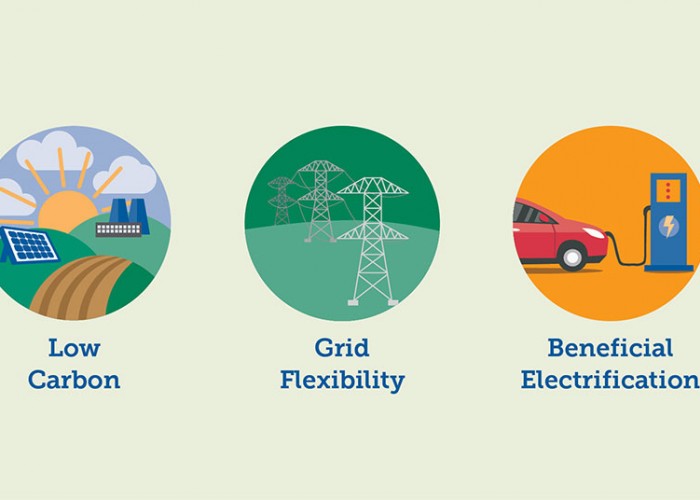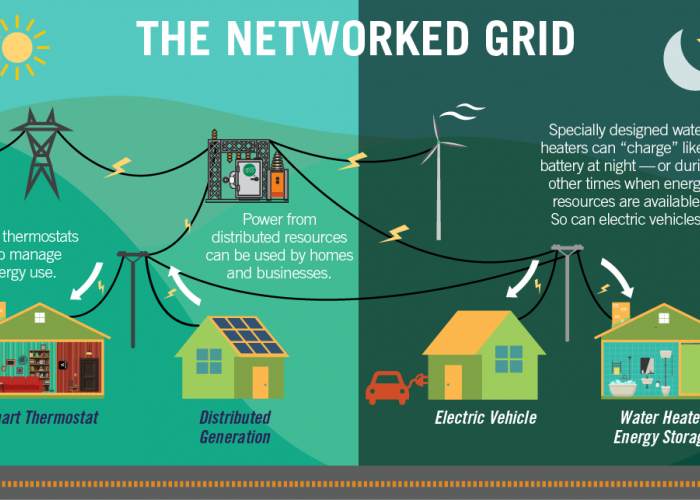Flexibility is the Key to a Brighter Energy Future
Co-ops are saving costs with a more flexible grid
By Joshua L. Winslow, PE
Joshua Winslow
The energy industry in the United States is embracing new and exciting technologies that hold promise to revolutionize the way electricity is generated, delivered and consumed. Advances in clean and renewable energy sources, communication, smart devices and energy storage, just to name a few, are enabling an electrical grid that is more efficient, less costly and more sustainable.
This energy transformation is not reserved solely for far-away corners of the country, nor is it to occur at some distant point in the future. It is happening right here at home, and it is happening now. North Carolina electric cooperatives are positioned to lead the way.
But how? What is the key to unlocking the potential of this brighter energy future? The answer is grid flexibility. So what does flexibility in the power grid mean, and why it is important?
This energy transformation is happening now. North Carolina electric cooperatives are positioned to lead the way.
To describe how and why our electrical grid must be flexible, we should first consider why we characterize the existing electrical grid in the U.S. as inflexible. Our current structure is robust; it has matured over the last 130 years into a highly reliable and efficient system, but it is optimized for power that flows in one single direction. Large, centrally located power plants generate electricity to meet what consumers use at a level forecasted hours — even days — in advance. The energy is moved over long distances by transmission systems with little visibility of what is occurring down the line, and distributed to homes and businesses on local systems that need little input for daily operation. Power use and weather conditions are anticipated and planned for in advance, and the system is coordinated to operate nearly autonomously until there is a problem.
But what happens when conditions are not predictable? When power can come from multiple sources throughout the distribution system, when loads can change almost instantly and when conditions require multiple reconfigurations every hour? That’s when an inflexible grid becomes more cumbersome and less reliable.
A flexible grid is one that can move power from those large centralized generation plants, as well as from smaller, distributed generation sources, like community solar farms or rooftop solar. A flexible grid can accommodate new loads like electric vehicles charging at home overnight, and it can adapt to split-second changes in energy sources, such as a cloud passing over a solar panel, or a windless afternoon across a wind farm.
These changes are currently offset by “quick start” fossil fuel generators that can ramp up on demand, but all eyes are on battery storage as another viable option. Batteries are quickly becoming the hero of flexible grid resources, working not only to improve reliability (switching on when the sun doesn’t shine or the wind doesn’t blow), but also to provide more power to the grid at peak times (when demand for energy is high), and to store energy in the event of some other disruption, like a power outage following a storm.
Lastly, the flexible grid must not only serve consumer demand, but interact with it, communicating with and coordinating loads that can decrease either when demand is too high, or to take advantage of favorable cost conditions. It can make for a more efficient system, creating cost savings for how electric co-ops do business. And as nonprofit, member-owned cooperatives, those savings are either reinvested into the system or passed along to you, the members.
As cooperatives, it is just as important for us to apply the characteristics of flexibility in the way we interact with our members as it is for us to construct a flexible grid. Offering flexible options in our rates and in the services we provide can enable our members to invest in renewable energy and behind-the-meter technologies such as smart thermostats, water heaters, and battery storage. Energy efficiency programs such as Brunswick Electric’s Weatherization Loans Program offer flexible payment options for members to make home improvements that reduce their energy consumption. The solid relationships electric cooperatives have established with our members is unique in our industry, giving us the opportunity to lead the nation in providing cost savings and greater reliability through a more flexible grid.
About the Author
Joshua L. Winslow is CEO and general manager for Supply-based Brunswick Electric.-
A brighter energy future for all
-
Share this story:






